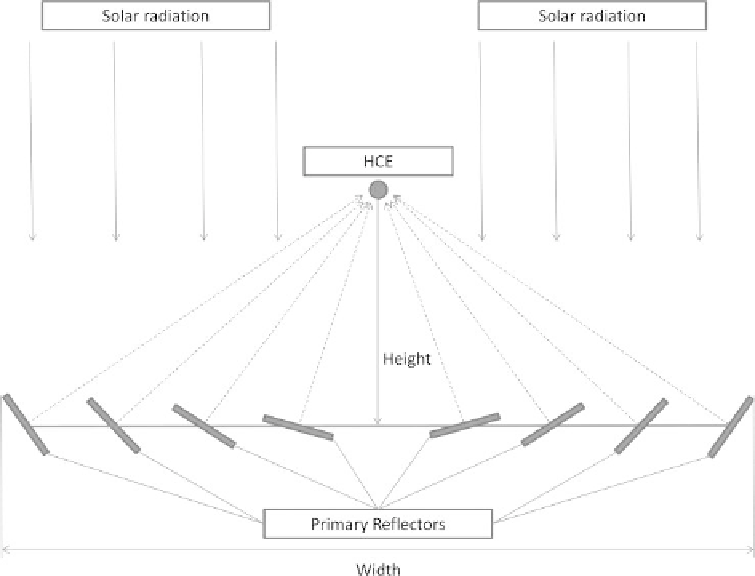Environmental Engineering Reference
In-Depth Information
Figure 14.3.9
Linear Fresnel Reflector concept.
The yearly thermal efficiency of commercial collectors is in the range of 90% (10%
of radiation concentrated on the receiver is lost) while, at nominal conditions, thermal
efficiency is about 95%.
This section has briefly described parabolic trough technology and has given an
idea of the expected efficiency of this kind of technology. Taking into account only
the two main losses (optical and thermal) related to the solar field, yearly efficiency
is below 50%. Piping losses and consumption by fluid recirculating pumps further
penalize efficiency, even if they account for less than 6%.
14.3.7 Linear Fresnel
The second type of linear focus technology is the linear Fresnel reflector (LFR). This
concept is based on several mirrors which can be moved independently and which col-
lect radiation on the HCE: the parabolic shape is substituted by several ground-based
mirrors which have different curvatures and which move independently. A schematic
of the LFR technology is shown in Figure 14.3.9.
Compared to the parabolic trough, this is a rather new technology. Actually, there
are only two commercial manufacturers for LFR: Novatech Biosolar (Novatech Biosol,
2012) and, more recently, Areva (Areva Solar, 2012). However, several companies
(e.g. Skyfuel) and research centres (e.g. NREL and Fraunhofer) are investigating

Search WWH ::

Custom Search